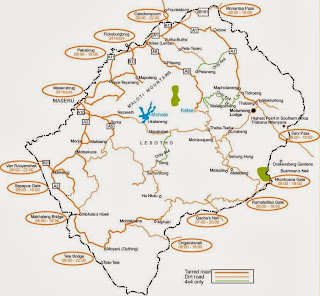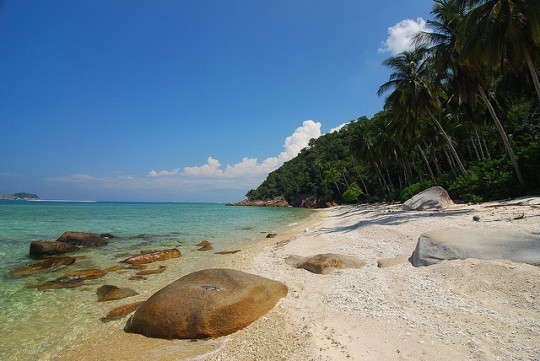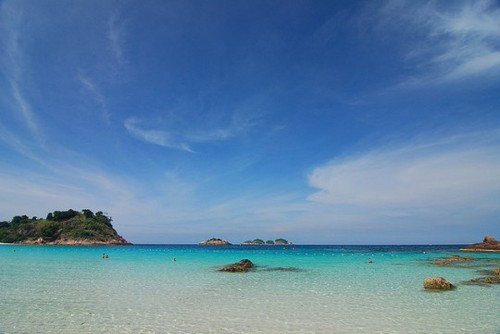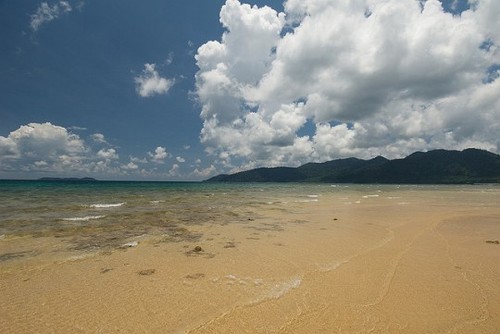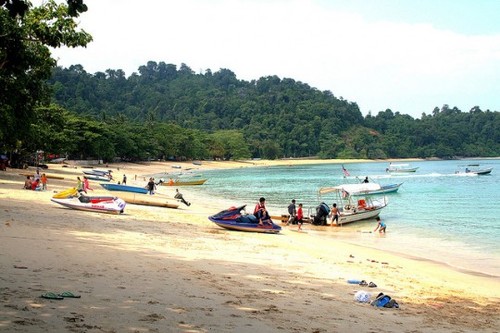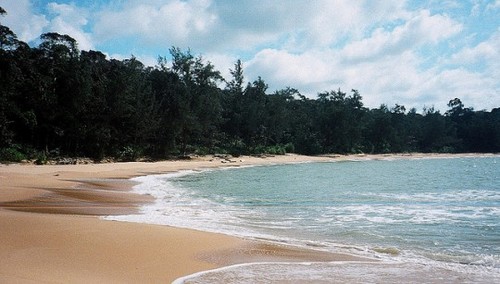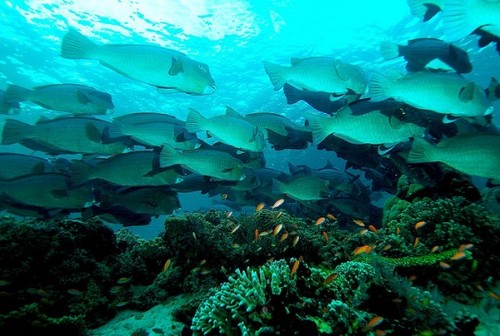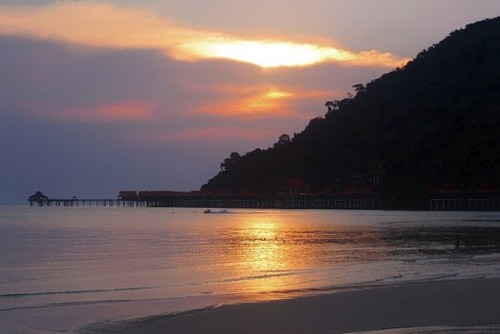map_of_lesothosm.jpg (829×768)
Tuesday, April 30, 2013
Peep into intimate world of elephants - IOL Travel Africa | IOL.co.za
Peep into intimate world of elephants - IOL Travel Africa | IOL.co.za
Lusaka - Only four available openings is testament to the popularity of Baines’ River Camp’s Elephant Workshops.
This year, The Vanishing Giants of Africa will run from August 12 to 17, 2013.
The workshop will be hosted by Baines’ River Camp in an unfenced area of over 4 000 square kilometres of diverse habitats and eco-systems in Zambia’s Lower Zambezi Valley.
Dr Johan Marais, author of The Great Tuskers Of Africa, with a vast knowledge of these great pachyderms, will lead the group that, from the comfort of a luxury lodge right on the banks of the Zambezi, will explore the intriguing world of these impressive mammals. The focus will be on:
their complex social structures of elephants
their behavioural patterns
their genetics
their means of communication
their undeniable importance to wildlife areas
their threatened existence
The group will also gain insight into the long-term effects of the ivory trade on our African heritage.
Apart from the focus on elephants, there will be sufficient opportunities to view other game and birds while out in the bush and on the river.
The rate for this five night workshop will be $3,500 (about R31 500) per person, inclusive of internal return flights from Lusaka.
For further details and reservations, please contact Baines’ River Camp; info@bainesrivercamp.com or visit www.bainesrivercamp.com
Researchers Trace Dinosaur Lineage to Tanzania, Zambia : Biology : Nature World News
Researchers Trace Dinosaur Lineage to Tanzania, Zambia : Biology : Nature World News

Researchers have now found that dinosaur-like creatures were living in Tanzania and Zambia before they were found anywhere else on the Earth. These ancestors of dinosaurs lived in the mid-Triassic period.
Previous studies, mostly on fossils obtained from South Africa and southwest Russia, had led researchers to believe that the predecessors of dinosaurs failed to repopulate Earth after a mass extinction some 252 million years ago.
"The fossil record from the Karoo of South Africa, for example, is a good representation of four-legged land animals across southern Pangea before the extinction," says Christian Sidor, a paleontologist at the University of Washington.
Pangea was a landmass that had all continents. The Southern Pangea was comprised of present-day regions such as Africa, South America, Australia and Antarctica.
The latest study is based on fossils obtained from non-traditional sites like Tanzania, Zambia and Antarctica. The expeditions were funded by the National Science Foundation (NSF).
Researchers created a kind of snapshot, based on the available fossil records, of the creatures that roamed the Earth some 5 million years before and 10 million years after the event.
Some types of four-legged creatures lost the race after the mass extinction, such as the Dicynodon- a creature that had the head of a turtle with the body of a fat lizard. Dicynodon along with its relative disappeared after the massive wipeout of dinosaurs more than 250 million years ago.
"Groups that did well before the extinction didn't necessarily do well afterward," Sidor added, according to a news release.
In the second snapshot, archosaurs were present in the Tanzanian basin but weren't found in other places. This four-legged animal is of great interest to researchers because it is believed to be a predecessor of dinosaurs and a relative of crocodiles.
The study showed that animals were widespread before the mass extinction event. But, even 10 million years after the event, only 7 percent of the animals were found in two or more places, showing that there was geographical clustering of animals.
The study is published in the journal Proceedings of the National Academy of Science.

The pig-size Dicynodon was part of a large, dominant group of plant eaters found across the southern hemisphere until the mass extinction event weakened their numbers so that newly emerging herbivores could compete. (Photo : Marlene Donnelly/Field Museum of Natural History/ University of Washington )
Researchers have now found that dinosaur-like creatures were living in Tanzania and Zambia before they were found anywhere else on the Earth. These ancestors of dinosaurs lived in the mid-Triassic period.
Previous studies, mostly on fossils obtained from South Africa and southwest Russia, had led researchers to believe that the predecessors of dinosaurs failed to repopulate Earth after a mass extinction some 252 million years ago.
"The fossil record from the Karoo of South Africa, for example, is a good representation of four-legged land animals across southern Pangea before the extinction," says Christian Sidor, a paleontologist at the University of Washington.
Pangea was a landmass that had all continents. The Southern Pangea was comprised of present-day regions such as Africa, South America, Australia and Antarctica.
The latest study is based on fossils obtained from non-traditional sites like Tanzania, Zambia and Antarctica. The expeditions were funded by the National Science Foundation (NSF).
Researchers created a kind of snapshot, based on the available fossil records, of the creatures that roamed the Earth some 5 million years before and 10 million years after the event.
Some types of four-legged creatures lost the race after the mass extinction, such as the Dicynodon- a creature that had the head of a turtle with the body of a fat lizard. Dicynodon along with its relative disappeared after the massive wipeout of dinosaurs more than 250 million years ago.
"Groups that did well before the extinction didn't necessarily do well afterward," Sidor added, according to a news release.
In the second snapshot, archosaurs were present in the Tanzanian basin but weren't found in other places. This four-legged animal is of great interest to researchers because it is believed to be a predecessor of dinosaurs and a relative of crocodiles.
The study showed that animals were widespread before the mass extinction event. But, even 10 million years after the event, only 7 percent of the animals were found in two or more places, showing that there was geographical clustering of animals.
The study is published in the journal Proceedings of the National Academy of Science.
The Datai Langkawi, Malaysia | The Australian
The Datai Langkawi, Malaysia | The Australian
Malaysia's iconic Datai resort adds 14 new luxury beach villas.
Set in virgin rainforest with direct access to a pretty, white-sand beach on a magical island off the coast of west Malaysia, the Datai Langkawi became one of Southeast Asia's most coveted luxury retreats soon after opening almost two decades ago.
The setting remains just as beguiling, but the opening of 14 beach villas this month provides a new level of barefoot luxury for visitors to jungle-cloaked Langkawi.
All 124 guestrooms, suites and villas at The Datai are located in the rainforest and feature verandas with peaceful views of the forest or Andaman sea. Privacy is a key attraction here - guests are rarely disturbed by anything noisier than the odd monkey or two - and a hallmark of the new villas.
Featuring natural materials of wood and rattan, the cool interiors sport all mod cons: flatscreen TV, Bose sound system, iPod docking station, free WiFi and a complimentary mini-bar (beer and non-alcoholic beverages).
The larger resort features two lovely swimming pools and an award-winning day spa with open-sided treatment pavilions nestled beneath the rainforest canopy.
WHERE TO EATIn-house, guests can tuck into Malaysian, Indian and Thai dishes, as well as Mediterranean-influenced fare, at a variety of venues including a beach club and The Pavilion in the treetops.
Executive chef Jakub Mares, whose CV includes stints at Heston Blumenthal's Fat Duck restaurant and as personal chef to Pope Benedict, oversees the lot. Guests and visitors from outside the resort tend to make a beeline for the Datai's signature Gulai House, located in an open-sided, kampung-style building in the heart of the rainforest. Try the sample platter, or campur-campur, of soft-shell crab, satays and mango salad. At the Beach Club, the ginger-steamed garoupa with sambal is popular.
DON'T MISS
A round of golf at the nearby 18-hole championship course designed by Ernie Els, which is being upgraded and will re-open later this year.
A round of golf at the nearby 18-hole championship course designed by Ernie Els, which is being upgraded and will re-open later this year.
STAND-OUT FEATURELovely views from the bed and bathtub and a design that welcomes the prevailing sea breeze.
CONCIERGE'S TIP
Enjoy a ramble with the resort's resident naturalists. Early morning and after-dark walks are popular and there's jungle trekking for the fit.
Enjoy a ramble with the resort's resident naturalists. Early morning and after-dark walks are popular and there's jungle trekking for the fit.
BEST RATE
Beach villas published rate: 9500 ringgit (about $3000) per night. Better deals for longer stays. Family packages and 20th-anniversary celebration offers available. Seven-night Deluxe Room packages from about $2650. More: + 60 4 959 2500; dataihotels.com.
Beach villas published rate: 9500 ringgit (about $3000) per night. Better deals for longer stays. Family packages and 20th-anniversary celebration offers available. Seven-night Deluxe Room packages from about $2650. More: + 60 4 959 2500; dataihotels.com.
Intrepid surfer’s return to Cape Town - Western Cape | IOL News | IOL.co.za
Intrepid surfer’s return to Cape Town - Western Cape | IOL News | IOL.co.za
Cape Town - Camps Bay surfer Brett Archibald, who spent 28 hours treading water off the coast of Indonesia, was reunited with his family on Sunday.
Two weeks ago the 50-year-old surfer fell overboard from the charter boat Naga Laut on which he and a group of friends were travelling between Padang Padang and the Mentawai Islands off the island of Sumatra.
Chantal Malherbe from All Aboard Travel, the local company which organised the Indonesian surfing trip for the surfer and his friends, said Archibald arrived home safely.
“He has just arrived home and is taking time out for a family day. The family just wish to be alone and celebrate,” said Malherbe.
Archibald arrived at Cape Town International Airport and was greeted by his wife, Anita, and their two children Zara, 10, and Jamie, 6.
On April 17, Archibald spent the night floating in the Indian Ocean. He was stung by jellyfish and had to shield his eyes after having them pecked at by seagulls. He had fallen overboard after becoming seasick, vomiting severely and blacking out.
An Australian vessel rescued him.
The father of two had damage to his kidneys and lungs and his nose was badly lacerated, but he stayed on in Indonesia to complete his surfing trip.
Seismographs to be installed in Andaman& Nicobar Islands | Business Standard
Seismographs to be installed in Andaman& Nicobar Islands | Business Standard
Geological Survey of India would install seismographs in two to three places in the Andaman and Nicobar Islands to monitor seismic activity around those areas.
"We are planning to install seismographs in two to three places in the Andaman Islands. By the end of this year, the work should be complete," GSI Director General A Sundaramoorthy said.
GSI already has seismographs in Maharashtra (Nagpur), Madhya Pradesh (Jabalpur), Sikkim (near Gangtok) and Tripura (Agartala).
Asked if there were plans to install seismographs in South India, he said, "South India below the Vindhyas exhibit lesser seismic activity compared to the North and Andaman and Nicobar Islands. So there is no need for it at present."
On the new facility at Andamans, he said, "It will be a broadband seismic station with state-of-the-art technologies.
Geological Survey of India would install seismographs in two to three places in the Andaman and Nicobar Islands to monitor seismic activity around those areas.
"We are planning to install seismographs in two to three places in the Andaman Islands. By the end of this year, the work should be complete," GSI Director General A Sundaramoorthy said.
GSI already has seismographs in Maharashtra (Nagpur), Madhya Pradesh (Jabalpur), Sikkim (near Gangtok) and Tripura (Agartala).
Asked if there were plans to install seismographs in South India, he said, "South India below the Vindhyas exhibit lesser seismic activity compared to the North and Andaman and Nicobar Islands. So there is no need for it at present."
On the new facility at Andamans, he said, "It will be a broadband seismic station with state-of-the-art technologies.
The Travel Series: Andaman and Nicobar Islands - CoolAge
The Travel Series: Andaman and Nicobar Islands - CoolAge

The Andaman and Nicobar Islands are a group of 100 plus islands in the Indian Ocean that have served as one of the southernmost points of the Indian subcontinent. Its strategic location has only been surpassed by its lush beauty that has led it to become one of the hottest tourist destinations in India. Before the tragic 2004 Tsunami which affected large parts of India, Indira Point, a part of the Islands, was considered to be the southernmost point of the country, before it got submerged.
The capital of the islands is Port Blair, and is remarkable example of how it has rebuilt itself post the Tsunami tragedy. As one walks across the relatively newly-built parks and amusement structures, one could never believe the immense hardship that its citizens had to go through to raise these structures from scratch. The infamous prison- 'Kala Paani', which used to be used as an impenetrable fortress for Indian prisoners during the British colonial era, today, stands as a major tourist attraction. I would strongly suggest attending its light-and-sound show which narrates its history to perfection. As I explored the building with its numerous spiralling staircases, I learnt more about its history through the several metal plates that lined every corridor. While the original building had seven wings, most of them were demolished, and now only two wings remain. The museum section of the prison showcased the various instruments of torture and terror that the prison officers employed to torture the prisoner.
One can also cover the entire area of Port Blair by foot, absorbing the natural beauty mixed with the official importance that the area has come to be associated with. The numerous museums throw light on the area's amazing history, with one museum even giving light to the fact that a certain species of goats inhabiting one of the uninhabited islands of the Andaman and Nicobar group have actually adapted to surviving on sea-water!
Most inhabited islands in the Andaman are accessible by land and one can hire a car or hop-onto a bus early in the morning at 5 am to go to various adjoining islands housing the famous limestone caves and lava-mud pool, and one will often go through the reserved forest territory of the Jarwa tribes, which have been given protection by the government. Other islands are accessible by boats or ships, and one must visit Ross Island for the spectacular view of the animated sea which can be viewed from an artificial hill-top in the background of a natural park. Ross Island is home to the ruins of the decades-old colonial offices that fell into disuse. The next stop should be Havelock Island. Havelock Island is home to some of the most beautiful beaches in the entire country- with pristine white sands and surprisingly well-maintained public beachfronts. There are many resorts in the area which are sea-facing and will provide a serene and wonderful experience to your holiday destination. Aman Shah, one of my fellow travellers, residing in Dolphin Resorts at Havelock tells me, "The sea-side view is more than amazing. One can see the sunrise as well as the sunset in the comfort of the resort huts with armchairs on their decks. You'll never want to leave. Moreover, renting bikes and riding on the long winding roads to beaches like the Radhanagar beach in the light rains are food for the soul."
One can reach Port Blair by either taking a two-stop flight to Chennai and then the islands, or by taking a train to Chennai and boarding a ship to Port Blair. All the islands can be accessed either by car or by ship.

The Andaman and Nicobar Islands are a group of 100 plus islands in the Indian Ocean that have served as one of the southernmost points of the Indian subcontinent. Its strategic location has only been surpassed by its lush beauty that has led it to become one of the hottest tourist destinations in India. Before the tragic 2004 Tsunami which affected large parts of India, Indira Point, a part of the Islands, was considered to be the southernmost point of the country, before it got submerged.
The capital of the islands is Port Blair, and is remarkable example of how it has rebuilt itself post the Tsunami tragedy. As one walks across the relatively newly-built parks and amusement structures, one could never believe the immense hardship that its citizens had to go through to raise these structures from scratch. The infamous prison- 'Kala Paani', which used to be used as an impenetrable fortress for Indian prisoners during the British colonial era, today, stands as a major tourist attraction. I would strongly suggest attending its light-and-sound show which narrates its history to perfection. As I explored the building with its numerous spiralling staircases, I learnt more about its history through the several metal plates that lined every corridor. While the original building had seven wings, most of them were demolished, and now only two wings remain. The museum section of the prison showcased the various instruments of torture and terror that the prison officers employed to torture the prisoner.
One can also cover the entire area of Port Blair by foot, absorbing the natural beauty mixed with the official importance that the area has come to be associated with. The numerous museums throw light on the area's amazing history, with one museum even giving light to the fact that a certain species of goats inhabiting one of the uninhabited islands of the Andaman and Nicobar group have actually adapted to surviving on sea-water!
Most inhabited islands in the Andaman are accessible by land and one can hire a car or hop-onto a bus early in the morning at 5 am to go to various adjoining islands housing the famous limestone caves and lava-mud pool, and one will often go through the reserved forest territory of the Jarwa tribes, which have been given protection by the government. Other islands are accessible by boats or ships, and one must visit Ross Island for the spectacular view of the animated sea which can be viewed from an artificial hill-top in the background of a natural park. Ross Island is home to the ruins of the decades-old colonial offices that fell into disuse. The next stop should be Havelock Island. Havelock Island is home to some of the most beautiful beaches in the entire country- with pristine white sands and surprisingly well-maintained public beachfronts. There are many resorts in the area which are sea-facing and will provide a serene and wonderful experience to your holiday destination. Aman Shah, one of my fellow travellers, residing in Dolphin Resorts at Havelock tells me, "The sea-side view is more than amazing. One can see the sunrise as well as the sunset in the comfort of the resort huts with armchairs on their decks. You'll never want to leave. Moreover, renting bikes and riding on the long winding roads to beaches like the Radhanagar beach in the light rains are food for the soul."
One can reach Port Blair by either taking a two-stop flight to Chennai and then the islands, or by taking a train to Chennai and boarding a ship to Port Blair. All the islands can be accessed either by car or by ship.
A sun seekers' comparison: Bali or Malaysia?
A sun seekers' comparison: Bali or Malaysia?
If you're planning your next holiday in the sun, Bali and Malaysia are fantastic destinations to add to your shortlist. The question is, how do you decide where to go? Read on to find our more helpful facts about each place that could make your decision easier.
Of course, being ideal candidates for sunny breaks, they both offer good weather; so, we will instead focus on their additional attractions. After all, booking the perfect summer holiday is all about picking somewhere with a mix of things to do and see that matches your personal interests, as well as finding a destination with balmy climes. When the time comes for you to book your hotel and flights, you can get good deals on luxury options through companies like Airworld Tours.
The lowdown on Malaysia
Let's begin with Malaysia. This country in south-east Asia is famous for its wonderful diversity, which spans both the landscape and culture. Come here and you can dive into a cultural melting pot of Indian, Malay and Chinese influences - to name but a few - which is reflected in everything from the delicious cuisine to its packed festival calendar.
A great thing about picking Malaysia as your destination is that you can see modern and traditional life living side by side - for example, little wooden buildings close to towering skyscrapers. Plus, if you fancy a lively city break, you can head somewhere like Penang, while places such as Langkawi are perfect for secluded getaways.
Among Bali's most exciting attractions are Kek Lok Si, which is one of Malaysia's most sacred temples and located in Penang, and the Batu Caves in Selangor. These are home to a Hindu temple, impressive statues, cave paintings and much more.
Go there if... You want to experience a diverse culture filled with exciting contrasts, as well as have the freedom to pick from a huge range of attractions and whether you want a city break or a quiet retreat.
The lowdown on Bali
A province in Indonesia, Bali is a beautiful island home to fascinating temples, delicious food and gorgeous beaches. Like Malaysia, it has a number of cultural influences, with Hindu influences being particularly prominent; Indian and Chinese are also notable.
Bali is somewhere perfect for experiencing more traditional ways of life, since village life is an important part of society here. Among the top things to see and do while you're here include relaxing on Kuta beach and Nusa Dua beach, both of which are scenic and have good tourist infrastructures, as well as visiting temples such as Pura Besakih Temple Complex.
Sampling the local food is another must. In Bali, meals tend to be buffet-style and some popular dishes include ares - a kind of soup - and bebuk betutu, which is steamed duck and vegetables wrapped in a banana leaf.
Go there if... You want to get away from it all and enjoy a more relaxed pace of life. It's also perfect for anyone hoping to explore traditional cultures and to see impressive temples.
Andaman isles beckon tourists | Deccan Chronicle
Andaman isles beckon tourists | Deccan Chronicle
Chennai: A ship journey to Andaman islands, which commenced during the colonial era, still attracts tourists and local travellers, as it is the only enjoyable service for three days by sea available from India.
Now, with the tourist season running from April till July, people throng to get seats onboard the vessels despite four airlines — Air India, Jet Airways, SpiceJet and Go Air — operating flights to Andaman from Chennai daily. “Our flights always run full. The demand is very high in the Chennai-Port Blair sector.
The demand skyrocketed especially after Kingfisher airlines stopped service. Last year, the flight fares went even up to Rs 23,000 one way during summer. Otherwise, the fare ranges between Rs 5,000 and Rs 10,500,” said a senior private airline official.
He added that the flights reach Port Blair exactly in two hours, while the ship journey takes about 72 hours, including three nights from Chennai. “So, for tourists visiting Andaman, it would be interesting to travel by ship one way and return home by flight,” he added.
“This trend of tourists travelling by sea and then returning by air is common as tickets are available for the return journey, whereas the onward ship journey is mostly booked for the next two months,” said an official at Andaman House in Chennai. Passengers who go regularly by ship continue to do so, as local natives have to pay only one-third the fare.
Even otherwise, the ship fare ranges between Rs 2,160 and Rs 8,420 one-way, depending on the class, starting from bunk to deluxe. We can also relax onboard, said A. Babu, an Andaman native.
We currently have four ships, namely MV Nancowry, MV Nicobar, MV Swaraj Dweep and MV Harshavardhana, carrying passengers to the island from Chennai, Visakhapatnam and Kolkata.
The ships also carry a wide assortment of cargo including edible itmes from the mainland to Port Blair and return with frozen shrimps, rubber, copra and betel nut from Andaman and Nicobar Islands.
Viator: Insider's Guide to Malaysia's Best Beaches
Viator: Insider's Guide to Malaysia's Best Beaches
Malaysia's east coast is the top spot to catch some rays for those living in Kuala Lumpur (KL) -- it's cheap and easy to reach by plane on one of the country's budget airlines, even for just a long weekend. The water is crystal clear, the beaches are powdery soft and blindingly white. My favorites on the east coast are:
Langkawi. Malaysia's duty-free island, Langkawi is the most touristy and lively island on the west coast. Although the beaches aren't quite as beautiful as those on the east coast, there is a much wider variety of hotels, restaurants, and shops on this tourist hot spot. Langkawi beaches have the added advantage of being available all year round - no monsoon closures for this northern island.
I'll let you in on a secret...
Thailand is not the only country in southeast Asia with stunning beaches. Malaysia has dozens of tiny islands on both the east and west coasts that rival the beauty of southern Thailand. Plus, the beaches in Malaysia have the added advantage of being relatively unknown (read: cheaper, less crowded, more unspoilt).
One important fact to keep in mind when planning a trip to any Malaysian beach is the monsoon season -- donot visit the east coast of Malaysia between November and March, unless you like rain. Lots of rain. That one caveat aside, here are my top picks for a beach-hopping Malaysian adventure.
For more information about Malaysia tours & things to do in Malaysia, check out our Things to Do in Malaysia Blog and our Suggested Itineraries in Malaysia blog post
Best Beaches: East Coast of Peninsular Malaysia
Malaysia's east coast is the top spot to catch some rays for those living in Kuala Lumpur (KL) -- it's cheap and easy to reach by plane on one of the country's budget airlines, even for just a long weekend. The water is crystal clear, the beaches are powdery soft and blindingly white. My favorites on the east coast are:
Redang. The most expensive of the east coast islands, Redang is truly paradise. Very few Malaysians actually live on the island, so you pretty much have the whole place to yourself. Snorkeling is available off any beach; if you're lucky, you might even see some sea turtles. Redang is well known as a turtle sanctuary, they usually lay their eggs on Turtle Beach on the north of the island. Berjaya Air makes it very easy to get to Redang from KL's Subang airport (a 45-minute flight, and you're on the beach within five minutes of arriving).
Perhentian Islands. A selection of smaller islands just north of Redang, the Perhentians are very popular with budget travelers. The beaches are totally unspoilt, with a wide variety of beach huts right on the shore, for just the right price. A favorite for diving and snorkeling, the Perhentians are a great place to earn your scuba diving certificate.
Tioman Island. Part of Malaysia's protected marine park islands, Tioman is a snorkeling and divers paradise. The abundant coral reefs off the northern coast of the island are home to a huge variety of colorful tropical fish within easy reach of the shore. Tioman is quite close to Singapore, towards the south of Malaysia's east coast and sees quite a few tourists from both Singapore and Malaysia each year. You will find larger, more budget-friendly hotels all around this popular island. Berjaya Air offers quick and easy flights directly to Tioman or you can take the bus to the coast, and then a ferry to the island.
Best Beaches: West Coast of Peninsular Malaysia
Langkawi. Malaysia's duty-free island, Langkawi is the most touristy and lively island on the west coast. Although the beaches aren't quite as beautiful as those on the east coast, there is a much wider variety of hotels, restaurants, and shops on this tourist hot spot. Langkawi beaches have the added advantage of being available all year round - no monsoon closures for this northern island.
The island is big enough for more than just beach sports, which make it especially attractive for more active travelers. There is a beautiful hike up to the Seven Wells (waterfalls) on the north of the island or the absolutely beautiful cable car ride up to the top of the highest mountain on Langkawi - providing breathtaking views of the ocean and nearby islands. Langkawi is also home to the most luxurious hotels Malaysia has to offer - the Datai and the Four Seasons. If you're looking for a weekend of pampering, look no further than the beautiful island of Langkawi.
Book an island hopping tour from Langkawi or visit the Pulau Payar Marine Park from Langkawi
Pangkor Island. Although not the most beautiful of Malaysian beaches, Pangkor is within an easy drive from KL - a great option for a weekend escape. There are several large hotels around Pangkor Island, but most expats opt for the Pangkor Beach Resort. If you're looking to splurge, Pangkor Laut is a privately owned island resort with stunning over-water bungalows, 5-star service, and door-to-door transportation included. An easy weekend get-away from the hustle and bustle of KL.
Borneo. The island of Borneo, shared between Malaysia, Brunei and Indonesia is quickly becoming a hot spot for well-traveled divers. On the west coast of Borneo, Turtle Beach and Golden Beach are part of the Similajau National Park. Both beaches are turtle nesting grounds, within a larger nature reserve full of tropical wildlife, jungle streams, waterfalls and plenty of animal residents. The natural parks of Sarawak are the perfect place to enjoy an invigorating jungle trek, bird watching, or just relaxing on the many perfect beaches.
Sipadan, on the east coast of Borneo, is one of the top dive spots in the world, by far the best in Malaysia. The island is an environmental reserve area so there are limits to the number of visitors per day. Diving in Sipadan is an amazing experience - you may see schools of greenback and hawksbill turtles, barracuda, manta rays, even hammerhead and whale sharks! The island is best for diving, rather than snorkeling or sunbathing, so make sure you plan in advance for a full-on diving experience.
Travel Tips & Precautions
Not to sound like your mother, but...
- Pack plenty of sunblock. While sunblock should be available at most resorts, some hotels on the smaller islands can be understocked. Since Malaysia isn't far from the equator, just a few minutes in the midday sun can leave you scorched.
- Bring mosquito repellent and walking shoes. Even if you plan to vegetate on the beach every day, you might find yourself trekking through Malaysia's abundant and colorful rain forest at some point.
- Don't lose your cool. As in most Asian societies, Malaysian culture values polite interactions which allow both parties to "save face". Courteous persistence with resort staff or locals will probably get you further than getting visibly upset. Note that Islamic tradition dictates that you should hand things to Malays using your right hand, not your left.
- Safeguard your valuables. Regardless of how secure your resort might seem, tourists' piles of expensive cameras and telephones can be tempting to locals, and things do occasionally go missing. Use the safe in your room, or leave valuables at the hotel desk, and keep an eye on your goods while bathing.
Subscribe to:
Comments (Atom)
